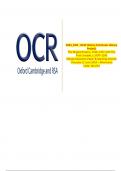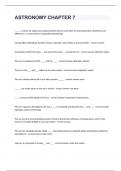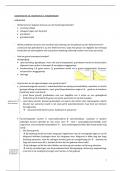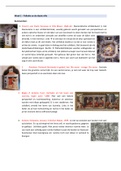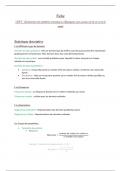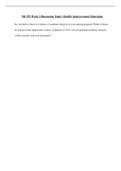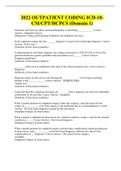2024_OCR - GCSE History B (Schools History
Project)
The Mughal Empire, 1526–1707 with The
First Crusade, c.1070–1100
Merged Question Paper & Marking Scheme
(Tuesday 11 June 2024 – Afternoon)
Code: J411/34
, Oxford Cambridge and RSA
Tuesday 11 June 2024 – Afternoon
GCSE (9–1) History B (Schools History Project)
J411/34 The Mughal Empire, 1526–1707
with The First Crusade, c.1070–1100
Time allowed: 1 hour 45 minutes
* 1 9 3 2 0 3 2 6 3 0 *
You must have:
• the OCR 12-page Answer Booklet
INSTRUCTIONS
• Use black ink.
• Write your answer to each question in the Answer Booklet. The question numbers
must be clearly shown.
• Fill in the boxes on the front of the Answer Booklet.
• Section A – The Mughal Empire, 1526–1707: Answer Questions 1 (a–c), 2, 3 and
either Question 4 or Question 5.
• Section B – The First Crusade, c.1070–1100: Answer Questions 6 and 7, and
either Question 8 or Question 9.
INFORMATION
• The total mark for this paper is 80.
• The marks for each question are shown in brackets [ ].
• Quality of extended response will be assessed in questions marked with an asterisk (*).
• This document has 8 pages.
ADVICE
• Read each question carefully before you start your answer.
© OCR 2024 [601/8408/5] OCR is an exempt Charity
DC (ST) 344905 Turn over
,GCSE (9–1) History B (Schools History Project) J411/34 – The Mughal Empire, 1526–1707 with
The First Crusade, c.1070–1100 – Exam Overview
Exam Date: Tuesday, 11 June 2024 – Afternoon Session
The GCSE History B exam (Schools History Project) for J411/34 will assess students' knowledge and
understanding of two distinct historical topics: The Mughal Empire, 1526–1707 and The First
Crusade, c.1070–1100. The exam will focus on key events, political changes, cultural developments,
and historical interpretations during these periods.
Key Topics and Themes:
1. The Mughal Empire, 1526–1707:
Foundation and Expansion of the Mughal Empire:
o The rise of the Mughal Empire under Babur and the establishment of Mughal rule in
India after the Battle of Panipat in 1526.
o The reigns of key Mughal emperors such as Akbar, Jahangir, Shah Jahan, and
Aurangzeb, and their policies of expansion, consolidation, and governance.
o The impact of military conquests and the integration of diverse regions into the empire.
Mughal Society and Culture:
o The social structure of the Mughal Empire, including the roles of emperors, nobility,
peasants, and artisans.
o The development of Mughal architecture, including the Taj Mahal, and the flourishing
of arts, literature, and trade.
o The influence of religious tolerance and the role of Islam, Hinduism, and other faiths in
shaping Mughal society.
o The economic policies and the trade routes that made the Mughal Empire a significant
player in the global economy.
Decline of the Mughal Empire:
o The causes of the decline of the Mughal Empire in the late 17th and early 18th
centuries, including factors such as internal conflict, external invasions, and the
weakening of central authority.
o The legacy of the Mughal Empire in Indian history, particularly in terms of cultural,
architectural, and social developments.
2. The First Crusade, c.1070–1100:
The Context and Causes of the First Crusade:
o The religious, political, and social factors that led to the call for the First Crusade,
including the role of Pope Urban II and the desire to reclaim Jerusalem from Muslim
control.
o The role of the Byzantine Empire and the appeal for help from Emperor Alexios I to the
West.
o The motivations of knights, peasants, and clergy who responded to the call for the
Crusade.
Key Events of the First Crusade:
o The journey of the Crusaders from Europe to the Holy Land, including significant
battles such as the Siege of Antioch and the Siege of Jerusalem in 1099.
o The challenges faced by the Crusaders, including logistical difficulties, infighting, and
encounters with different cultures along the way.
o The capture of Jerusalem and the establishment of the Crusader states in the Levant.
Impact and Legacy of the First Crusade:
o The immediate effects of the Crusade on the Holy Land, including the massacres and
the establishment of Christian rule over Jerusalem.
, o The long-term consequences of the Crusade, including the increased tensions between
Christianity and Islam, the development of Crusader states, and the cultural exchange
between East and West.
o The broader implications of the Crusade on European society, including the impact on
medieval kingship, the Church, and the concept of religious warfare.
3. Key Skills and Historical Thinking:
Comparing and Contrasting Two Distinct Periods:
o The exam will encourage students to compare the governance, religious influences, and
military aspects of the Mughal Empire and the First Crusade. Students should consider
the different objectives and outcomes of each.
o Students should be able to analyze how cultural, religious, and political factors shaped
both the Mughal Empire and the Crusades.
Use of Sources:
o Students will be asked to evaluate historical sources, including documents, images, and
artifacts, to understand the experiences of people during both the Mughal Empire and
the Crusades.
o There will be questions that require students to assess the reliability of sources and use
them to form conclusions about events and motivations during these periods.
Historical Interpretations:
o The exam will require students to engage with different historical interpretations of the
Mughal Empire’s successes and decline, as well as the outcomes and significance of the
First Crusade.
o Students may be asked to debate the long-term effects of both periods on world history,
considering different perspectives on their historical significance.
Preparation Tips:
Mughal Empire:
o Focus on the key emperors, their policies, and the economic, social, and cultural
achievements of the empire.
o Understand the causes of the empire’s decline and how Mughal rule shaped India’s
history.
o Review the influence of the Mughal Empire on architecture, art, religion, and trade.
The First Crusade:
o Study the key events and battles of the First Crusade, particularly the Siege of Antioch
and the Siege of Jerusalem.
o Analyze the motivations of Crusaders and the role of the Pope in calling the Crusade.
o Understand the consequences of the Crusade for both the Holy Land and European
society.
Comparing the Two Topics:
o Practice drawing comparisons between the expansionist aims of the Crusaders and the
Mughal Empire, including the challenges they faced and the cultural impacts.
o Focus on the roles of religion and warfare in both the Mughal Empire and the First
Crusade.
This exam will test students’ ability to analyze historical events and their consequences, interpret
sources, and draw comparisons between two very different but significant periods in world history.
Good luck with your studies and exam preparation!

